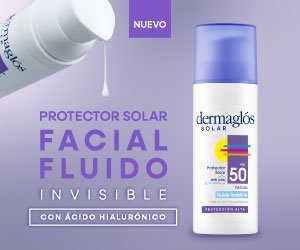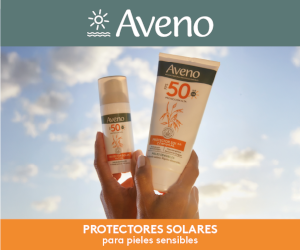Reglamento de publicación
Cesión de copyright
About the Journal
Theme and scope
Editorial policy
Editorial
Open access policy and use licenses
Indexing and inclusion
Costs per publication
Thematic scope of the sections
Peer review
Responsibility of the authors
Plagiarism policy
Digital preservation
Interest conflict
Ethical-regulatory aspects
Privacy statement
Copyright
Theme and scope
Dermatology Argentina ISSN 1515-8411 (print) ISSN 1669-1636 (online) is the official scientific publication of the Argentine Society of Dermatology. It publishes original and unpublished research articles, reviews, and clinical cases in Dermatology, that have not been presented or published in other journals or media, after a triple-blind evaluation process, in order to provide scientifically verifiable information for the medical population. Starting year: 2002.
Published quarterly (January/April, May/August, September/December), it is aimed at specialists in Dermatology and related branches of Medicine, who carry out their activity in Latin America.
Editorial policy
Dermatology Argentina will consider for the publication of articles, the requirements established by the International Committee of Medical Journal Editors that elaborated the "Uniform requirements to prepare manuscripts sent to biomedical journals" (Ann Intern Med 1997; 126: 36-47) update May 2023, available at http://www.icmje.org. The languages of publication are Spanish and English. The Management reserves the right to reject articles for technical or scientific reasons, because they do not strictly conform to the regulations or because they do not have the minimum level of quality required according to the hierarchy of the publication. Likewise, in cases where for reasons of layout or space it is deemed appropriate, reductions or modifications of the text or graphic material may be made, as well as style corrections that do not affect the concepts or conclusions of the article, without prior authorization from the authors.
Editorial
Argentine Society of Dermatology Civil Association (SAD). Av. Callao 852, 2nd floor, (1023), City of Buenos Aires, Argentina. Telephone: (+54 11) 4815-4649. Email: derargentina@sad.org.ar
Lugones® Editorial Seal of Editorial Biotecnológica S.R.L. Av. Curapaligüe 202, 9th floor, ofic. B (1406), City of Buenos Aires, Argentina. Phone: +54 11 4632-0701/4634-148. Email: redaccion@lugones.com.ar
Open access policy and use licenses
Openness/free of charge: access to the contents published in this journal is open, free and free, in full text and without temporary embargoes. The Journal upholds its commitment to open access policies to scientific information, considering that both scientific publications and research financed with public funds must circulate on the Internet freely, free of charge and without restrictions.
Legal records: Registration of the brand "Dermatología Argentina" in Class 9: Reg. No. 4,584,197, Act No. 4,020,917; in Class 16: Reg. No. 4,584,196, Act No. 4,050,918, National Institute of Intellectual Property (INPI). Registration in the National Directorate of Copyright: File No. 5,355,521.
The Journal is licensed under the Creative Commons Attribution-Noncommercial-No Derivative Works 4.0 International License.
This publication adheres to the Budapest Open Access Initiative, putting its recommendations and definitions into practice.
The same license and usage rights apply to the website in general as to each published issue and article. Authors maintain full and exclusive control over the integrity of their published work, as well as the right to be cited and duly acknowledged. It adheres in all cases to the guidelines and their respective practices for fair use "Fair use" developed by DOAJ.
Consult the "Submissions" page to learn about rules for authors.
The authors maintain the copyright of their published articles without restrictions and grant the Argentine Society of Dermatology permanently the reproduction rights of their work to preserve it and make it open access in whole or in part through digital media and channels. current institutional license, under the same license of original use of publication in the journal or with the same characteristics.
Indexing and inclusion
Argentine Dermatology is indexed in the following indexers, bases and directories:
DIALNET: Dialnet Foundation
Medicine Basic Nucleus of Argentine Scientific Journals
Latin American and Caribbean Literature in Health Sciences
Latindex Directory and Online Magazines
IBEROAMERICAN NETWORK OF ADVANCED MEDICINE
Costs per publication
The Journal does not apply charges in any of the cases indicated:
- For access to the full text of all issues and articles.
- Sending of originals.
- Evaluation and processing of approved articles.
Thematic scope of the sections
Sections of the Journal:
- Editorial: contribution requested by the Committee from an expert, who from a personal point of view writes about topics of current interest.
- Continuing Medical Education: the manuscript must have a Multiple choice of 10 numbered questions, with 4 letter options and their correct answers.
- Original Articles: a research paper (attempts to find an answer to one or several questions raised, it must describe completely but concisely the results of a clinical or laboratory investigation that falls within the criteria of scientific methodology), or to a case series (set of two or more cases of interest, with a review of the topic).
- Clinical Cases: allows the quick and easy publication of a case of practical interest and easy reading.
- Review Papers: their structure has a free organization with the development of the different aspects of the subject and if the author has carried out a critical analysis of the information, a Discussion section will be included. Subtitles can be used to achieve a better didactic presentation. Authors submitting this type of article must include a section describing the methods used to locate, select, collect, and synthesize the data.
- What is your diagnosis?: the first numbered page must include the title in Spanish and English with the lesion that is presented, ignoring the diagnosis. Number of authors: up to 4
- Young Dermatologists: in this Section, Dermatologists (doctors in training in the Dermatology Specialist Medical Career, residents and attendees) will have a space where they can publish various topics of interest, with a didactic approach. The topics will be clearly presented, highlighting the visual content (clinical photos, graphs, charts and/or algorithms) with the aim of facilitating the learning of frequent therapies and pathologies in Dermatology.
- The Skin in Letters: the first numbered page must include a title in Spanish and English and a subtitle, the latter corresponding to the name of the author and the book where the fragment to be published was extracted. Number of authors: up to 2.
- Update Work: the structure of these has a free organization with the development of the different aspects of the subject and if the author has carried out a critical analysis of the information, a Discussion section will be included. Subtitles can be used to achieve a better didactic presentation. Authors submitting this type of article must include a section describing the methods used to locate, select, collect, and synthesize the data.
- Legal Dermatology
- Dermatological Pearls
- Dermoscopy
- Aaron Kaminsky Award
Peer review
All manuscripts sent to Dermatology Argentina for publication will be submitted to a pre-evaluation carried out by the Editorial Committee, whose members meet monthly. Once the work has been delivered to the Editorial Secretariat, the Editorial Committee evaluates (without identifying the authors) if it meets the conditions to be published; If this pre-evaluation is positive, three referees external to the publishing entity and the editorial team are appointed, as a minimum, to evaluate the work. The arbitration is triple blind, online.
The possible decisions of the opinion of the external evaluators are: accepted, accepted with corrections and rejected. In case of discrepancy between the evaluators, the Editorial Committee decides.
Estimated term of the evaluation process: up to twelve months.
The final decision on the publication of an article corresponds to the Editorial Committee.
The Editorial Secretary will inform the opinion (acceptance, acceptance with corrections, non-acceptance) to the authors of the article, maintaining the anonymity of the reviewers. The order of publication of the papers is at the discretion of the Editorial Committee. The publication of an article does not imply that the Journal shares the expressions expressed in it. The responsibility for the content, affirmations and authorship of the works corresponds exclusively to the authors.
Responsibility of the authors
The responsibility for the considerations contemplated in the texts and respect for intellectual property corresponds to the authors. The authors, in the process of sending the original, declare that they have complied with international standards regarding conflict of interest and ethical standards for research and publication of academic and scientific material. The opinions expressed by the authors of the articles are their sole responsibility.
Plagiarism policy
Collaboration of all participating roles is governed by the Committee on Publication Ethics (COPE) Principles of Transparency and Good Practice in Scholarly Publishing, https:/publicationethics.org.
All submissions are monitored through an online search and through plagiarism detection software plag.es.
In the event of total or partial plagiarism being detected or of locating the article already published by the same author, the journal will not publish the article nor will it advance in the respective editorial process.
In the event that an already published article is denounced for plagiarism or for violating ethical standards, the Journal will immediately and momentarily withdraw it from the portal, and will notify the author to exercise his right of defense. The publishing institution will decide in this regard, if plagiarism is confirmed it will not be published again nor will future contributions of the same authorship, otherwise it will be included again.
Digital preservation
The LOCKSS system is used to create a distributed file on its contents ensuring the generation of replicas. Actions are also carried out at the server level, and backup, preservation and archive policies, guaranteeing the reconstruction of the entire collection of the magazine and the preservation of each digital content published.
Conflicts of interest
The authors declare that they have no conflicts of interest with any institution or natural or legal person related or mentioned with the content of the submitted article. The same criteria is applied to the work of reviewers and editors, preventing them from interfering with the objectivity and/or transparency of the review process.
Ethical-regulatory aspects
As established in the Declaration of Helsinki (point 23, https://www.wma.net/publications/) all medical research studies in humans, regardless of their experimental or observational nature, including research on material human and identifiable information, must be submitted for consideration, comment, advice and approval to the relevant Ethics Committee before starting the study. In the presentation of clinical cases, informed consent must be requested for the publication of personal information. If it is a study related to the use of drugs, devices, inputs or any other element with economic value or the study received some type of partial or total subsidy from a third party (University, Foundation, pharmaceutical industry or other), the information must be included. Conflict of interest letter. These requirements are essential to begin the review process of an article sent to Dermatology Argentina. Studies carried out with experimental animals must have the approval of the corresponding institutional Bioethics Committee.
Privacy statement
The names and email addresses entered in this magazine will be used solely for the stated purpose and will not be made available to any other purpose or person.
Advertising policy
The Journal is financed through advertisements of biomedical products, which are previously supervised and approved by the Directors of the Journal. These ads are displayed randomly, are not linked to content or reader behavior, are not related in any way to editorial decision-making and are always kept separate from published scientific articles.

























